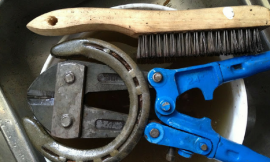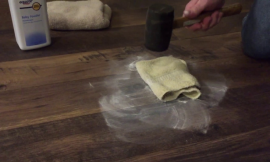
Did you know that nearly 70% of households struggle with mold issues in their washing machines? That’s right! If you've ever opened your washing machine door and been greeted by an unpleasant musty smell or visible mold, you're not alone. Mold can thrive in the warm, damp environment of your washer, posing not only a nuisance but also potential health risks. In this guide, I'll show you how to safely and effectively clean mold from your washing machine using bleach—a powerful solution that gets the job done while maintaining your machine's longevity. Let's dive into the cleaning process, ensuring your washing machine is fresh and safe for your laundry needs!
Understanding Mold in Washing Machines
What is mold?
Mold is a type of fungus that grows in damp conditions. It thrives in warm, humid environments and can often be found in places like bathrooms, kitchens, and yes, washing machines. When moisture and organic matter accumulate in your washing machine, mold may flourish, potentially leading to unpleasant odors and health concerns.
Common causes of mold in washing machines
Mold in washing machines is often the result of several factors. One of the main culprits is the buildup of moisture. If you frequently wash smaller loads or leave the lid closed after a cycle, you're creating the perfect environment for mold. Additionally, using too much detergent can leave residue that encourages mold growth. Lastly, poorly ventilated laundry rooms can contribute to the lingering humidity that feeds mold.
Signs of mold presence
It's crucial to recognize the signs of mold in your washing machine before it becomes a bigger issue. Pay attention to a musty smell, which is often the first indicator. You may also notice visible mold spots in the detergent drawer or around the door seal. If your clothes start coming out of the wash smelling less than fresh, that could be another sign that mold is at play.
Preparing to Clean Your Washing Machine
Gather necessary supplies
Before you dive into cleaning your washing machine, it's important to gather your supplies. You will need bleach or a specialized washing machine cleaner, a soft scrub brush, a microfiber cloth, and gloves. Having everything on hand will streamline the process.
Safety precautions
Safety should always be your priority. When working with bleach or any cleaning agents, make sure to wear gloves to protect your skin. Ensure your laundry area is well-ventilated; open windows or doors to avoid inhaling any strong fumes. It’s a good idea to keep children and pets away from the area while you’re cleaning.
Read the manufacturer's guidelines
Before you begin, it's essential to familiarize yourself with your washing machine’s manufacturer's guidelines. These instructions will often provide specific recommendations for cleaning and may even advise against certain cleaning agents that could damage the appliance. Knowing what your machine can handle will help you avoid any unintended issues.
The Step-by-Step Cleaning Process
Step 1: Set the washing machine
Start by setting your washing machine to the hottest water setting. This is a key step, as hot water helps to kill mold spores and dissolve any built-up residues.
Step 2: Add bleach to the detergent compartment
Once you have your washing machine set, it's time to add the cleaning agent. Pour bleach or your chosen washing machine cleaner into the detergent compartment. If you're using bleach, be sure to follow the recommended amounts on the label because using too much can damage your machine.
Step 3: Run a cleaning cycle
After adding the cleaning solution, start a cleaning cycle or a regular wash cycle without any clothes. This allows the cleaning agent to circulate through the machine, reaching all those hidden areas where mold might be lurking.
Step 4: Scrub visible mold
While the machine is running, take the opportunity to scrub away any visible mold spots. Use a soft scrub brush or a cloth to gently clean around the door seal and inside the detergent drawer.
Step 5: Rinse and dry the machine
Once the cycle finishes, run another rinse cycle with just hot water to remove any residual bleach or cleaning solution. After that, leave the door open to let the drum dry completely. It's important to ensure everything is dry to prevent mold from returning.
Post-Cleaning Maintenance Tips
Regular washing machine care
To minimize the chances of mold returning, make it a habit to clean your washing machine regularly. Aim for a deep clean every few months, and consider running a hot water cycle with vinegar or baking soda to freshen things up between deep cleans.
How to dry your washing machine
Drying your machine is as simple as leaving the door or lid open after each use. This promotes airflow, helping to prevent moisture buildup. Additionally, regularly wipe down the door seal and detergent drawer after use to catch any water that may linger.
When to seek professional help
If you've tried cleaning your washing machine and still detect a moldy smell or visible mold growth, it may be time to call in a professional. Persistent mold problems can sometimes indicate a more significant issue with the machine that requires expert attention. Don’t hesitate to seek help if you feel overwhelmed or if there's significant mold that you can't remove on your own.
Conclusion
Cleaning mold from your washing machine doesn’t have to be a daunting task! By following these straightforward steps and maintaining regular care, you can keep your washer mold-free and in top shape. Remember, a clean machine not only enhances your laundry but also promotes a healthier home environment. If you found this guide helpful, share it with friends and family who might also be dealing with this issue! Let’s keep our washers clean and our clothes fresh!






